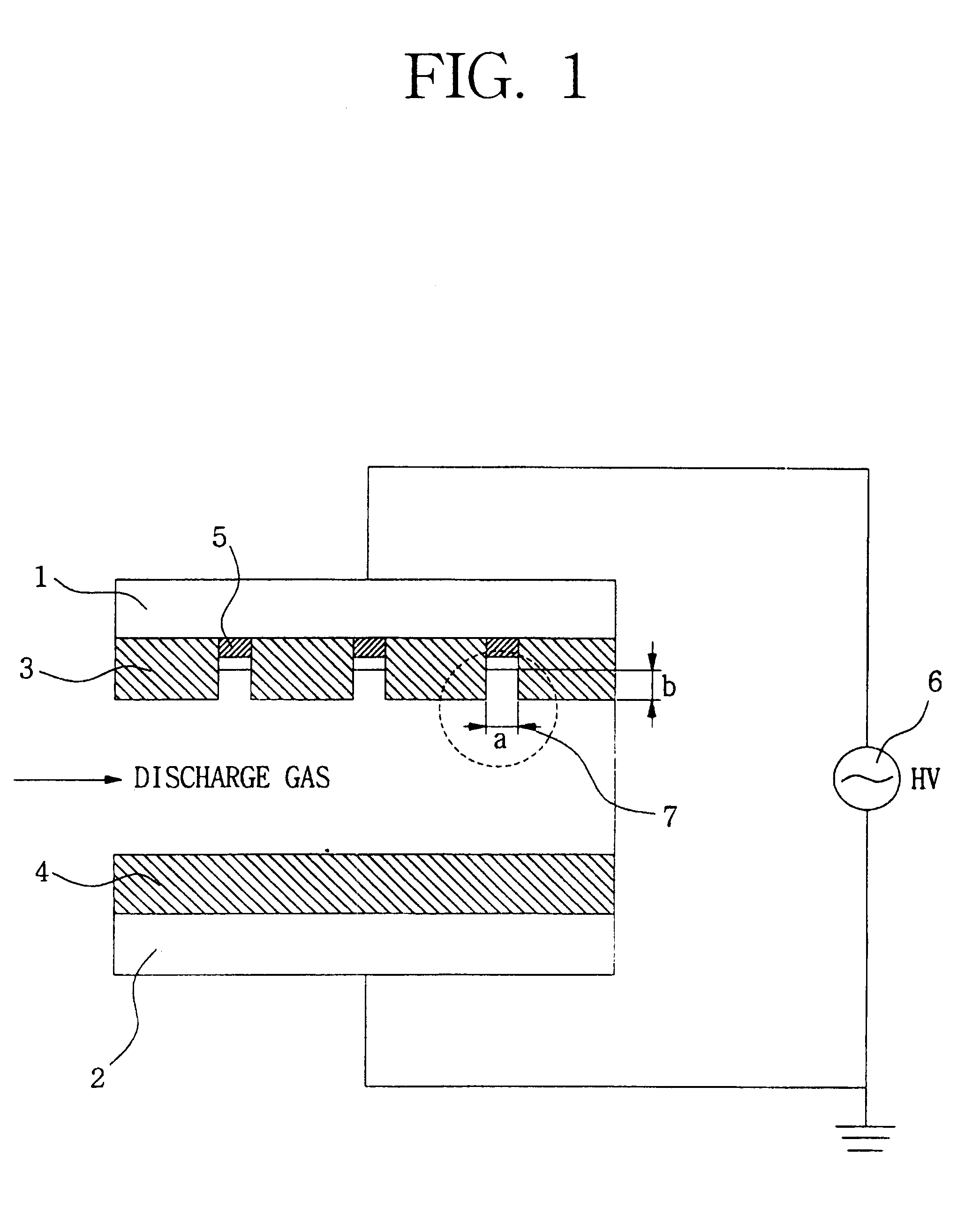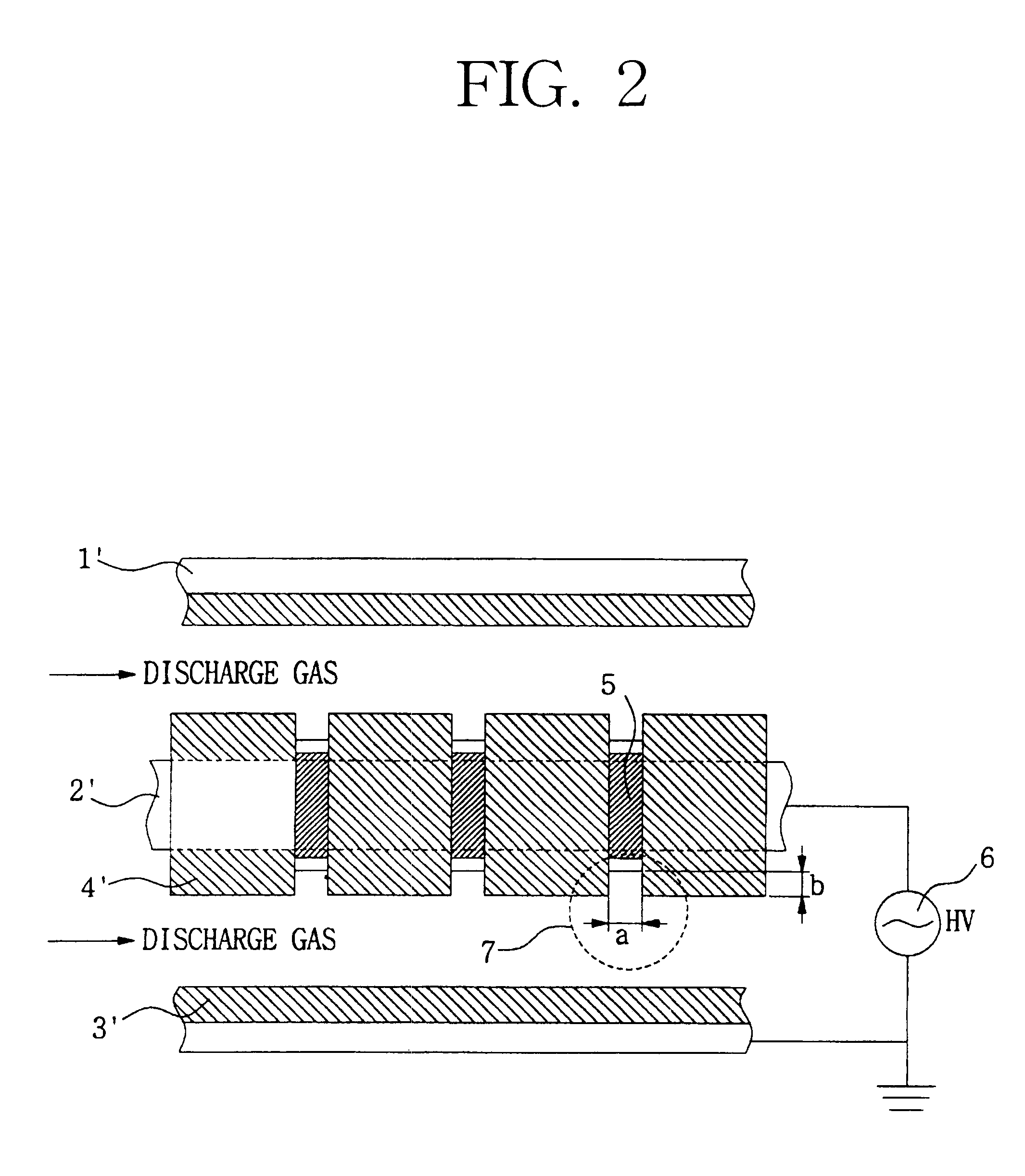Apparatus for generating low temperature plasma at atmospheric pressure
a technology of atmospheric pressure and apparatus, applied in static indicating devices, instruments, water/sewage treatment by oxidation, etc., can solve the problems of difficult plasma application, high cost, and large amount of apparatus
- Summary
- Abstract
- Description
- Claims
- Application Information
AI Technical Summary
Benefits of technology
Problems solved by technology
Method used
Image
Examples
Embodiment Construction
This experimental example employed the same plasma-generating apparatus as in Second Embodiment, which had a plate structure in which two electrode plates 1 and 2 were arranged to face each other and a dielectric is provided on each of the facing surfaces of the electrode plates 1 and 2. In one of the dielectrics 3 and 4, a plurality of discharge gaps 7, each being 200 .mu.m width and 2 mm high, were formed. For the conductor electrodes 5, tips 8 shaped as in FIG. 3a, each having a width (a) of 2 mm and a height (b) of 1.5 mm, were provided. Between the two electrodes 1 and 5, which were 7 mm distant from each other, helium gas was introduced, while a direct current bipolar pulse electric source of 50 KHz was applied across the electrodes to discharge at atmospheric pressure.
As a result, about 1 KV was used to initiate the discharge with a maintenance voltage of about 0.7 KV. Under these conditions, plasma with a high density was stably generated without generating arcs.
At atmospher...
PUM
| Property | Measurement | Unit |
|---|---|---|
| height | aaaaa | aaaaa |
| width | aaaaa | aaaaa |
| thickness | aaaaa | aaaaa |
Abstract
Description
Claims
Application Information
 Login to View More
Login to View More - R&D
- Intellectual Property
- Life Sciences
- Materials
- Tech Scout
- Unparalleled Data Quality
- Higher Quality Content
- 60% Fewer Hallucinations
Browse by: Latest US Patents, China's latest patents, Technical Efficacy Thesaurus, Application Domain, Technology Topic, Popular Technical Reports.
© 2025 PatSnap. All rights reserved.Legal|Privacy policy|Modern Slavery Act Transparency Statement|Sitemap|About US| Contact US: help@patsnap.com



